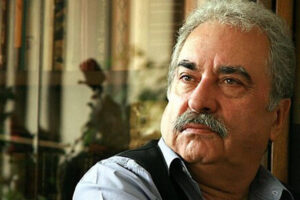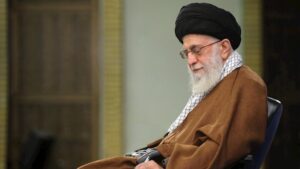Alireza Jafari-Zand, in a specialized meeting titled “The Footprint of Books and Libraries in Ancient Iran” held on Thursday evening at the Bahar Book City of Isfahan, referred to a recurring question among researchers and history enthusiasts: Why are the names of ancient Iranian authors not recorded in the existing sources? Why, when we speak of the Achaemenids, do we cite Greek historians such as Herodotus and Xenophon? He emphasized that we must examine archaeological evidence to answer the question of whether historiography existed in ancient Iran.
Achaemenid Records as Evidence of Court Historiography
He pointed to the Achaemenid era and the Persepolis archives, stating: “In the treasury of Persepolis, over 70,000 tablets have been found, about 3,600 of which were discovered in the Persepolis fortification. These tablets were mostly dedicated to recording workers’ wages, but they also provide highly valuable information about social structures, maternity leave, salary payments, and the daily life of workers.” He continued: “A nation that records so much detail surely had a passion for writing and documenting events. Another example is the Behistun Inscription, where Darius in its eleventh section mentions that his victories over enemies were documented by historians and dispatched to different satrapies.”
The archaeologist added: “Texts of Darius have even been found written on papyrus in Egypt. This shows that ancient Iranians used a variety of writing materials to record their events.”
Referring to Alexander’s invasion of Iran and the presence of historians and painters in his company, he said: “The mosaics discovered in Pompeii correspond with Achaemenid records, proving that Iranians were skilled at documenting history and significant events.”
The Difficulty of Preserving Pre-Islamic Texts and the Pahlavi Script
Jafari-Zand also addressed the post-Islamic period, stating: “After the Arab invasion, the Pahlavi script was considered heretical, and many written texts were destroyed. For example, Pahlavi books were collected and burned by the Tahirids and other local rulers in Nishapur and various regions. Even exquisite works such as Kalila and Dimna were endangered.”
He added: “Figures like Ibn al-Nadim and Hamza al-Isfahani, as historical sources, help us trace the existence of such texts, but the original manuscripts of many books are no longer extant.”
The ancient Iran researcher continued: “So far, no paper or papyrus manuscripts from the pre-Islamic period have been unearthed in archaeological excavations. However, letters and parchments discovered in the Hasti-Jan cave in Delijan show that Iranians were literate and familiar with writing.”
Libraries and Their Role in Post-Islamic Iran
Referring to libraries of the Islamic era, Jafari-Zand said: “During the Safavid and Qajar periods, Isfahan had many libraries. The French traveler Chardin recorded seeing the library of the Chaharbagh School, but unfortunately, most of its books were destroyed after the Afghan invasion. Some manuscripts were collected by locals and Jews and then sold.”
Jafari-Zand remarked: “These events show that Iran was never safe from invasions and plunder, which led to the loss of many libraries and written works.”
He also mentioned the Saruya library, stating: “This library in Isfahan contained a large number of parchments, which were reported by Abu-Mashar Balkhi and later by Hamza Isfahani. Most of these texts were in Greek and Pahlavi scripts, but due to historical and social circumstances, they gradually disappeared.”
Archaeological Excavations and the Importance of Iranian Records
Jafari-Zand emphasized the importance of archaeological excavations in understanding the history of books and libraries: “Excavations carried out in Ashraf Hill, Tabarak Castle, and other parts of Isfahan show that many libraries and pre-Islamic texts were hidden beneath ditches and mounds. Unfortunately, systematic excavations in Iran have been very limited compared to neighboring countries.”
He added: “In Iraq, dozens of European and American teams are conducting excavations, but Iran lags behind in this field. Many historical documents and ancient libraries remain undiscovered.”
The archaeologist concluded: “Despite all these limitations, there is evidence that ancient Iranians had writers and historians. Ferdowsi used the Khodaynamak (‘Book of Lords’) as a source in composing the Shahnameh, drawing from texts that no longer exist today. This shows that writing and libraries played a vital role in ancient Iran.”
Education, Writing, and Cultural Heritage in Ancient Iran
Jafari-Zand highlighted the role of education and libraries in ancient Iran and stated: “During the Achaemenid era, children were trained in horsemanship, warfare, and literacy. In the Islamic period as well, schools and mosques such as the Nizamiyyah of Baghdad and Isfahan had libraries where various sciences were taught and preserved.”
He added: “The Avesta was preserved orally to protect it from destruction by fire, and the script Vīst Dēbīre was developed for the precise recording of sounds and religious texts. This shows that Iranians have always valued writing and the preservation of knowledge.”
The archaeologist emphasized: “Based on archaeological findings, historical texts, and Ferdowsi’s Shahnameh, it can be concluded that ancient Iran had historians and writers, and that libraries played a key role in preserving and transmitting knowledge. Although many manuscripts have been lost, the traces of writing and libraries in Iran’s history can still be identified, and future research may shed more light on this cultural heritage.”
Libraries of Ancient Iran and the Lost Heritage
He noted: “Many Greek and Roman works that existed during the Achaemenid period and afterward are no longer accessible today, and we can only learn of their content through references by historians such as Aristeas and Arrian. Even in Greece, only a small portion of texts has survived, and the situation was more or less the same in ancient Iran.”
Speaking about the Abbasid period and religious tolerance, Jafari-Zand said: “From the caliphate of Harun al-Rashid to al-Ma’mun, the conditions for scientific and cultural growth were provided. Iranians, Muslims, Zoroastrians, Jews, and Christians took part in scholarly and philosophical debates, and this opportunity led to the emergence of Iranian scholars and writers.”
He added: “This intellectual freedom continued until the Iranian Renaissance movement, but later, with the onset of religious wars and restrictions on freedoms, the production and writing of scientific and literary works declined.”
The Influence of Translations and Greek Culture on Iran
In another part of his talk, the ancient Iran researcher stated: “Many of the philosophical and scientific texts of Greece were translated into Arabic and, during the Abbasid era, were transmitted to Iranians and other societies. These translations laid the groundwork for the emergence of new wisdom and knowledge in Iran, as well as advances in medicine, philosophy, and literature.”
He added: “The scarcity of older native sources led Iranian writers and scholars to focus on translating and drawing upon Greek and Roman works.”
Archaeological Excavations and Historical Realities
Jafari-Zand emphasized that historical claims can only be confirmed through archaeological excavations. He explained that findings reveal many fire temples in Iran remained active until the 4th century AH, disproving the notion of their complete destruction by the Arabs. Archaeology also shows that the remains of palaces, mounds, and military structures in Isfahan and other regions of Iran provide precise information about the organization and social life of different historical periods.
Highlighting the importance of heritage preservation, he stated: “Without proper care and sufficient funding, many archaeological excavations suffer damage, and parts of our cultural heritage are lost.”
The archaeologist cited examples of endangered or unfinished projects in Isfahan, including the Abdolrazzaq underpass and the Jahan-Nama Palace, stressing the role of media in preventing their destruction.







